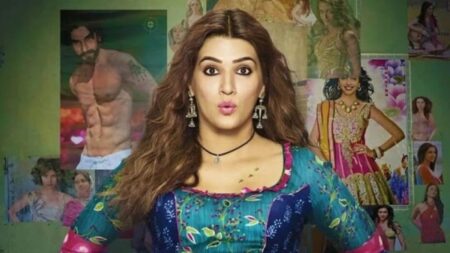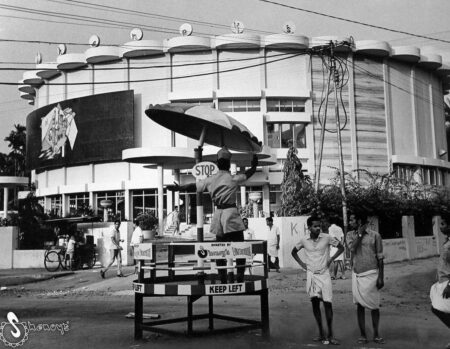Borrowing elegantly from predecessors and contemporaries, Jagjit Singh gave Ghazal a style of his own and transformed the music form in unimaginable ways. February 8 is his birthday.
Jagjit Singh can be called the architect of modern Indian Ghazal. His contribution towards popularizing Ghazal among the masses speaks for itself. But what made him such a big success? To answer that, we have to understand the history of Ghazal before him and how he changed its compositions and renditions to make it popular among the masses.
A brief history of Ghazal
Ghazal is a form of Urdu poetry, which has been in vogue for many centuries now. It is termed as a conversation between two lovers: boy-girl, devotee-God, etc. This form was popular among the learned populace as its language, rendition and the thoughts expressed in it were considered to be not easily understood by the general public.
Artists such as Begum Akhtar, Gulam Ali and Mehdi Hasan, among others, were the pioneers in bringing Ghazal to masses.
Begum Akhtar sang it in Thumri/Dadra style. Mehdi Hasan composed and rendered it combining the purity of raga, excellent poetry, and emotive appeal of his voice. Gulam Ali brought in more acrobatics such as the use of Sargam with laya, composing Ghazal in a faster tempo and effortlessly shifting from one Raga to another while elaborating. Jagjit Singh borrowed elements from all these, but formed his own style.
Simple text, powerful content
Jagjit Singh realized that the chaste Urdu is difficult for the masses to understand. Therefore he would select the poems with simple words, but with an appealing and profound thought. Ghazals such as Tum Ko Dekha To Yeh Khayal Aaya, Tum Itna Jo Muskura Rahe Ho and Apne Hothon Par Sajana Chahta Hun are some examples.
My guru Anup Jalota-ji says, “Jagjit Singh was an extremely intelligent and a very sensitive person. He never sang cheap lyrics. While selecting a Ghazal, he would think, whether the thoughts expressed in it, would appeal to people.”
Unique composing and rendering
Jagjit Singh realized that there are two forms of music popular in India. Bollywood songs and pure classical music. So he combined both of these in a unique way. His tunes were Raga based, however their musical arrangement would be modern. He says, “In film music, various western instruments are used, and people have become used to their sounds. If we limit ourselves only to the traditional instruments like Tabla, Sarangi, etc, it is possible that people may not like it.” In all of his recordings, we realize the important role of instruments such as violin, guitar etc.
Even though simple, Jagjit Singh’s tunes showed different shades of a raga, which were hitherto unexplored. Gazals such as Huzoor AapKa Bhi Ehetaram Karta Chalun, Meri Tanhaiyon Tum Hi Laga Lo MujhKo Seene Se, Jhoom Ke Jab Rindon Ne Pila Di, etc. even though based on Bhairavi Raga, show totally different shades of the same.
While most of his compositions consist of simple language poems and simple tunes, he also composed purely Urdu ghazals of Galib, Meer-taki-meer etc. He also used rare talas like sul-fakta (similar to Jhaptal) for Ghazals such as Koyi Paas Aayaa Savere Savere (Raga Lalat), Khuda Hum Ko Aisi Khudai Na De (Mishra Kirwani), etc.
This uniqueness would be shown, when he elaborated Ghazals. His elaboration focused more on Bhava, and was totally different from his colleagues like Mehdi Hasan and Gulam Ali. His elaboration for ghazals such as Sarakti Jaaye Hain Rukh Se Nakaab, Main Nashi Mein Hum, Sunte Hain Ke Mil Jaati Hai Har Cheez Duaa Se, etc. would have effective use of Murchanas, and a mixture of allied Ragas. Because of his excellent Talim of Indian classical music, and his command over western harmonies, he showed very different patterns in the same scale/Raga, which were not so traditional.
Bhajan Samrat Anup Jalota says, “In my opinion, Jagjit Singh was a great artist, who’s voice invoked Gambheera Rasa, with a lot of emotive appeal. If God would have had a voice, it would be that of Jagjit Singh. He was extremely tuneful, and brought out the emotions in the poetry extremely well.”
Other forms of music
Though Ghazal was Jagjit singh’s forte, he sang other forms of music such as Geet, Bhajans, Punjabi Sabad/folk music etc. He popularized Ghazals in films with songs like Hothon se choo lo tum, Hoshwalon ko khabar kya, etc. His other songs such as Chitthi na koi sandes, Wo kagaz ki kashti wo barish ka pani also became extremely popular.
Among his Bhajans, the album He Ram among others became very well-known. He sang pure classical bandishes in the album Different Strokes, combining classical bandishes with western arrangement. His renditions of thumris such as Babul Mora, Bajuband Khul Khul Jaye were also well acknowledged.
He did Jugalbandis with his contemporaries such as Gulam Ali and Anup Jalota, besides his wife Chitra Singh (a great singer in her own right, who played a very important role in Jagjit’s career right from poetry selection to his performances), Jagjit Singh also released albums with Ganasamradni Lata Mangeshkar, and Asha Bhosle. He also sang with the then upcoming artist Alka Yagnik for a song KisKa Chehra Ab Main Dekhu.
Because of excellent poetry selection, unique composition and rendition style, Jagjit Singh became one of the most successful exponents of the modern Ghazal, and it’s allied forms. He would be remembered forever for his immense contribution to Ghazal and other forms of music.
Also See: Pt Jasraj to PS Narayanaswamy, a Line-up of Heritage Losses




